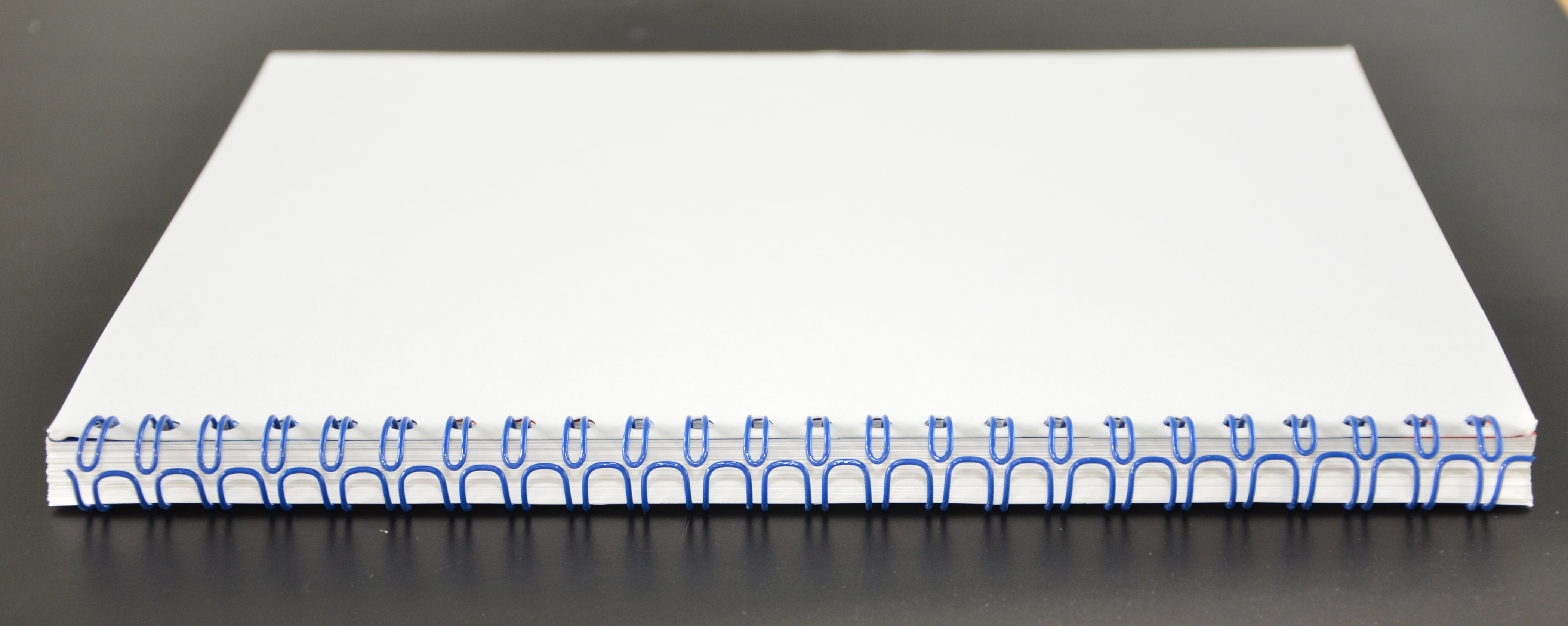Wire Binding on:
[Wikipedia]
[Google]
[Amazon]

 Wire binding is a popular commercial
Wire binding is a popular commercial
 Wire binding is a popular commercial
Wire binding is a popular commercial book binding
Bookbinding is the process of building a book, usually in codex format, from an ordered stack of paper sheets with one's hands and tools, or in modern publishing, by a series of automated processes. Firstly, one binds the sheets of papers alon ...
method, and is known by various names, including ''double loop wire'', ''double-o'', ''ring wire'', ''twin loop wire'', ''wire comb'', ''wire-o'', ''wirebind'' and ''wiro''. With this binding method, users insert their punched pages onto a C-shaped spine
Spine or spinal may refer to:
Science Biology
* Spinal column, also known as the backbone
* Dendritic spine, a small membranous protrusion from a neuron's dendrite
* Thorns, spines, and prickles, needle-like structures in plants
* Spine (zoology), ...
, and then use a wire closer to squeeze the spine until it is round. Documents that are bound with wire binding will open completely flat on a desk, and allow for 360 degree rotation of bound pages, without the side protrusion produced by spiral binding.
Hole patterns and pitches
There are three common hole patterns used in binding documents with double loop wire. Each hole pattern has specific sizes and applications where it is best suited.3:1 pitch (3 holes per inch)
The 3:1 pitch hole pattern is most commonly used for binding small documents with double loop wire. Spines are available in sizes between and in diameter. The hole pattern can use either square or round holes.2:1 pitch (2 holes per inch)
Although a 2:1 pitch hole pattern is most commonly used for binding larger documents, it can also be used for smaller books. It is most commonly found in sizes from to . However, a couple of manufacturers make special small sizes, with diameters down to . Renz GmbH own the registered trademark for One Pitch®, which is a brand describing 1/4" to 1/2" sizes.19-loop wire
In the past, some comb binding machines would come with a wire closer. These machines were designed to be used with 19-loop wire, which uses the same pattern as for plasticcomb binding
Comb binding (sometimes referred to as "cerlox" or "surelox" binding) is one of many ways to bookbinding, bind pages together into a book. This method uses round plastic spines with 19 rings (for US Letter size) or 21 rings (for A4 size) and a ...
. This hole pattern will have 19 longer rectangular holes that are on centers, for a total length of . This style of binding used to be called Ibiwire, which was Ibico's name for it. However, when Ibico was purchased by the General Binding Corporation
General Binding Corporation (GBC) is a business machines and supplies manufacturer which makes equipment and supplies for binding, lamination, and other presentation products. The company is part of ACCO Brands
ACCO Brands Corporation is an Ame ...
, this type of supplies was discontinued. Today, 19-loop wire is commonly called Spiral-O Wire.
Wire binding equipment
In order to bind documents with double loop wire, a binding machine and a wire closer are required. Smaller organizations will often choose a small manual wire binding machine that offers a manualhole punch
A hole punch, also known as a hole puncher or paper puncher, is an office supplies, office tool that is used to create holes in sheets of paper, often for the purpose of collecting the sheets in a Ring binder, binder or folder (such collected sh ...
and a built-in wire closer. Medium-sized users will often choose a wire binding machine with an electric punch and built-in wire closer. The highest volume wire binding users such as binderies, print shops and in-plant printers will usually separate the punching and finishing stages of the binding process, in order to increase productivity. These users will often use a heavy-duty modular interchangeable die punch or an automated punching system, along with either a manual or an electric wire closing machine.
References
{{Reflist Bookbinding